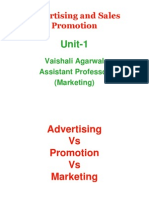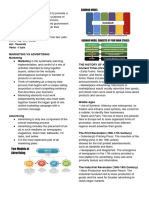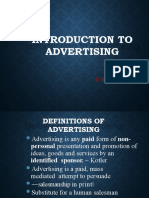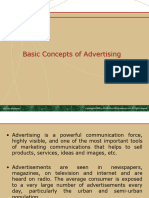0% found this document useful (0 votes)
2 views8 pagesAdvertising A Comprehensive Overview
This document provides a comprehensive overview of advertising, covering its definition, historical evolution, strategic objectives, and the process of creating effective campaigns. It distinguishes advertising from related concepts like publicity and propaganda, and outlines key principles for successful advertising design. Additionally, it emphasizes the role of advertising agencies in executing campaigns and ensuring ethical standards in the industry.
Uploaded by
mailtomatoshriCopyright
© © All Rights Reserved
We take content rights seriously. If you suspect this is your content, claim it here.
Available Formats
Download as PDF, TXT or read online on Scribd
0% found this document useful (0 votes)
2 views8 pagesAdvertising A Comprehensive Overview
This document provides a comprehensive overview of advertising, covering its definition, historical evolution, strategic objectives, and the process of creating effective campaigns. It distinguishes advertising from related concepts like publicity and propaganda, and outlines key principles for successful advertising design. Additionally, it emphasizes the role of advertising agencies in executing campaigns and ensuring ethical standards in the industry.
Uploaded by
mailtomatoshriCopyright
© © All Rights Reserved
We take content rights seriously. If you suspect this is your content, claim it here.
Available Formats
Download as PDF, TXT or read online on Scribd
/ 8






















































































